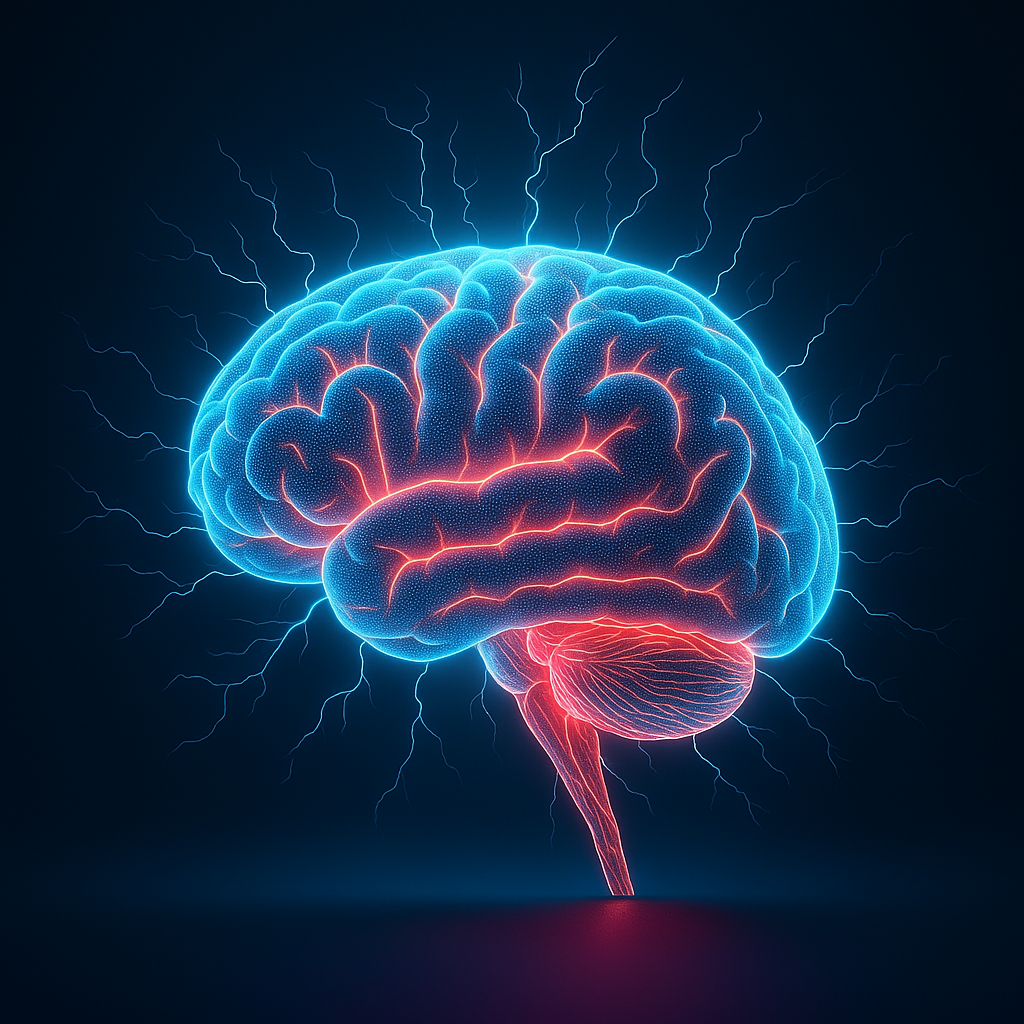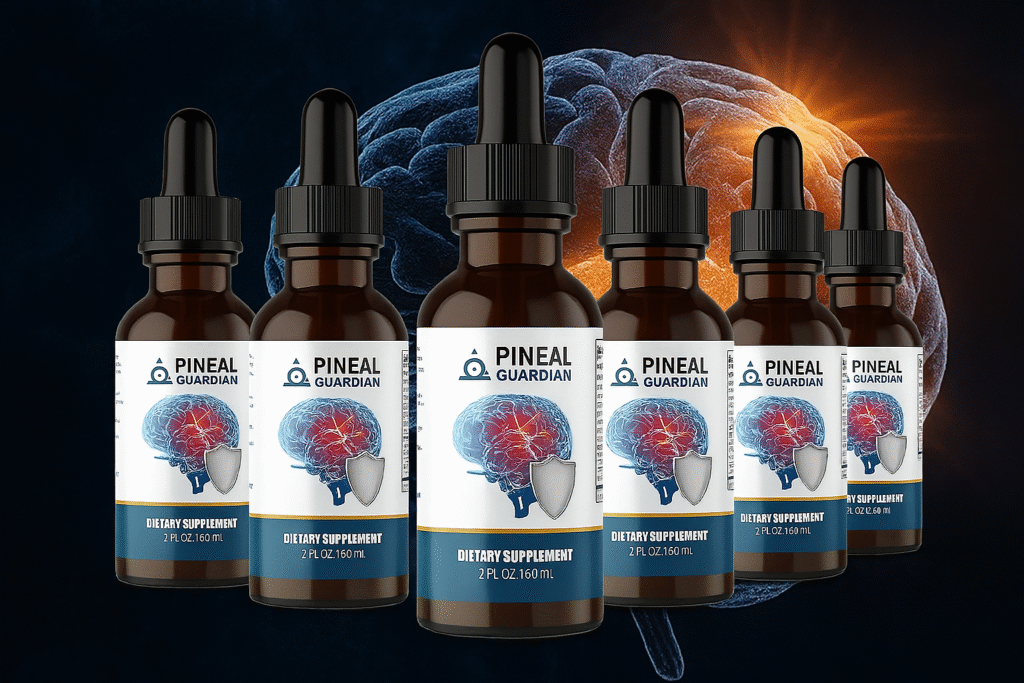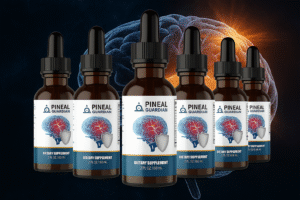Millions of people struggle with poor sleep, foggy thinking, and a loss of inner clarity—symptoms often linked to dysfunction of the pineal gland. Tucked deep between the brain’s hemispheres, this tiny gland is best known for regulating melatonin and the circadian rhythm. But it’s also widely considered a gateway to spiritual awareness.
Over time, the pineal gland can become calcified due to exposure to environmental toxins like fluoride and heavy metals. This calcification may dull its function and disrupt the body’s natural rhythms.
In this article, we explore science-informed, natural methods to decalcify the pineal gland using food, supplements, and simple lifestyle shifts.
What Causes Pineal Gland Calcification?
Pineal gland calcification refers to the buildup of calcium phosphate crystals within the gland, often visible on CT scans as early as adolescence. Factors believed to accelerate calcification include:
-
Fluoride (commonly found in tap water and toothpaste)
-
Heavy metals like mercury, lead, and aluminum
-
Chronic inflammation and oxidative stress
-
Poor sleep hygiene and constant artificial light exposure
-
High intake of processed food and environmental pollutants
While research into pineal detox is still emerging, many health experts suggest that reducing exposure and supporting natural elimination pathways may help.

Diet Tips to Support Pineal Health
Your diet plays a central role in either contributing to or preventing pineal gland calcification. By reducing exposure to harmful compounds and increasing intake of detoxifying, anti-inflammatory foods, you can create an internal environment where the pineal gland can function optimally.
1. Avoid Fluoride and Processed Foods
Fluoride, found in many tap water supplies and dental products, is one of the main contributors to pineal gland calcification. Processed foods may also contain synthetic additives, preservatives, and heavy metals that increase toxic burden. Switch to fluoride-free toothpaste and avoid food packaged in aluminum or plastic.
2. Drink Clean, Filtered Water
Water is the foundation of detox. Using reverse osmosis, activated carbon, or gravity filters can significantly reduce fluoride and chlorine exposure. Staying properly hydrated also supports kidney and liver function, which are critical to eliminating toxins from the bloodstream.
3. Eat Organic, Whole Foods
Organic produce minimizes exposure to pesticides that could disrupt hormone function. Favor nutrient-rich, anti-inflammatory foods:
-
Leafy greens (like kale, spinach, arugula) provide chlorophyll and minerals
-
Cruciferous vegetables (like broccoli, cauliflower, cabbage) support liver detox enzymes
-
Berries are packed with antioxidants that combat oxidative stress
-
Avocados, walnuts, olive oil offer healthy fats that support brain and endocrine function
4. Add Detoxifying Superfoods
-
Chlorella & Spirulina: These blue-green algae bind to heavy metals like mercury and help remove them from the body. They also alkalize the blood and nourish mitochondria.
-
Raw garlic: Contains sulfur-based compounds that increase glutathione, the liver’s master detoxifier.
-
Beets & lemon juice: Improve bile flow, which is essential for fat-soluble toxin elimination.
-
Tamarind: Has shown potential in clinical studies to increase urinary excretion of fluoride.
These foods not only support pineal health but also contribute to hormonal balance, clearer skin, improved digestion, and reduced brain fog.

Lifestyle Habits to Activate Your Pineal Gland
Beyond food and supplements, your daily environment and behavioral choices significantly influence pineal gland function. Since the gland is light-sensitive and linked to circadian rhythms, aligning your lifestyle to natural cycles can help reawaken its activity.
1. Get Sunlight During the Day
Natural sunlight regulates the hypothalamic-pineal-adrenal axis. Morning light exposure resets your body clock, stimulates serotonin, and primes your pineal gland to begin melatonin production at night. Aim for 15–30 minutes of natural light exposure within an hour of waking.
2. Sleep in Total Darkness
The pineal gland is highly sensitive to light—even minimal ambient light can disrupt melatonin release. Eliminate LED indicators, cover windows with blackout curtains, and use an eye mask if needed. This improves sleep quality and allows for full nocturnal hormonal cycling.
3. Reduce EMF and Blue Light Exposure
Electromagnetic fields (EMFs) and blue light from screens may interfere with pineal activity. Avoid screens for at least one hour before bed, and consider turning off Wi-Fi routers or switching to airplane mode at night to reduce EMF load.
4. Practice Mindfulness or Meditation
The pineal gland has long been associated with higher consciousness. Breathwork, meditation, and mindfulness practices may help stimulate pineal blood flow and oxygenation. Techniques like alternate nostril breathing or focused gaze (trataka) are often used in yogic traditions to “activate the third eye.”
5. Avoid Excess Calcium Supplements
Supplemental calcium, especially when taken without Vitamin K2, can deposit in soft tissues like arteries and glands. Instead, obtain calcium from leafy greens and seeds, and pair it with magnesium and K2 to ensure proper transport.
By implementing these lifestyle changes, you not only create conditions for pineal restoration but also enhance mood, energy, and spiritual clarity. When combined with detox strategies and the right supplements, the results can be transformative.

Supplements That May Help Decalcify the Pineal Gland
1. Iodine
Helps displace halogens like fluoride and bromide from tissue. Supports thyroid and pineal hormone balance.
2. Fulvic Acid
Chelates heavy metals and improves cellular nutrient transport.
3. Turmeric (Curcumin)
Anti-inflammatory and antioxidant, protects neural tissue from oxidative stress.
4. Boron
Shown in older research to help neutralize fluoride toxicity.
5. Vitamin K2
Directs calcium away from soft tissues and into bones, helping prevent calcification.
Note: Supplements like Pineal Guardian contain many of these compounds in liquid form for faster absorption. It’s designed to complement a natural detox lifestyle.
Meet Pineal Guardian – A Natural Ally for Detox & Mental Clarity
While natural methods such as diet, hydration, and mindfulness form the foundation of pineal health, many individuals look for an additional boost—especially when symptoms of gland calcification are more persistent. Pineal Guardian is one such solution that has gained popularity due to its focused, liquid-based formulation designed specifically to support pineal detoxification.
What Sets It Apart?
-
Targeted Ingredients: It combines fulvic acid, iodine, turmeric, and other botanicals shown to assist with heavy metal detox, inflammation control, and hormonal balance.
-
Liquid Delivery: Sublingual application may enhance absorption and bioavailability, delivering faster support to the endocrine system.
-
Clean Formula: Free from synthetic additives, GMOs, and gluten, making it compatible with holistic and sensitive users.
-
Customer Feedback: Many users report better sleep, vivid dreams, and improved emotional clarity after 2–4 weeks of daily use.
Whether you’re just beginning your wellness journey or looking to deepen your pineal gland restoration protocol, Pineal Guardian may offer a convenient, research-informed solution that complements your efforts.
Where to Buy Pineal Guardian + Pricing
Pineal Guardian is only available on the official website. Buying direct ensures authenticity, access to support, and eligibility for refunds.
Pricing:
-
2 Bottles: $69 each
-
4 Bottles (Most Popular): $59 each
-
6 Bottles (Best Value): $39 each + FREE shipping
Satisfaction Guarantee: 365-day full refund if not satisfied.
>>Order Pineal Guardian from the Official Website with 365-Day Guarantee<<
Final Thoughts
There’s no miracle cure for pineal calcification—but through consistent detox strategies, clean eating, targeted supplementation, and mindful habits, it’s possible to support this vital gland naturally. Whether your goal is better sleep, deeper meditation, or hormonal balance, nurturing the pineal gland is a worthwhile investment.
For those seeking an all-in-one solution, Pineal Guardian offers a convenient and targeted way to enhance your detox protocol.
FAQs
What are the symptoms of a calcified pineal gland?
Poor sleep, low melatonin, brain fog, reduced dream recall, and a lack of emotional clarity are commonly reported.
Is decalcifying the pineal gland scientifically proven?
Some processes like fluoride reduction and antioxidant intake are supported, but no medical treatment exists for “pineal detox.” This is a holistic concept.
How long does it take to see results?
Improvements may appear within 2–4 weeks when combining diet, lifestyle, and supplements consistently.
Can supplements like Pineal Guardian help?
Yes. It combines fulvic acid, iodine, turmeric, and adaptogens in a bioavailable liquid format.
Should I stop taking calcium?
Not necessarily. Just avoid high-dose calcium without balancing nutrients like K2 and magnesium.


